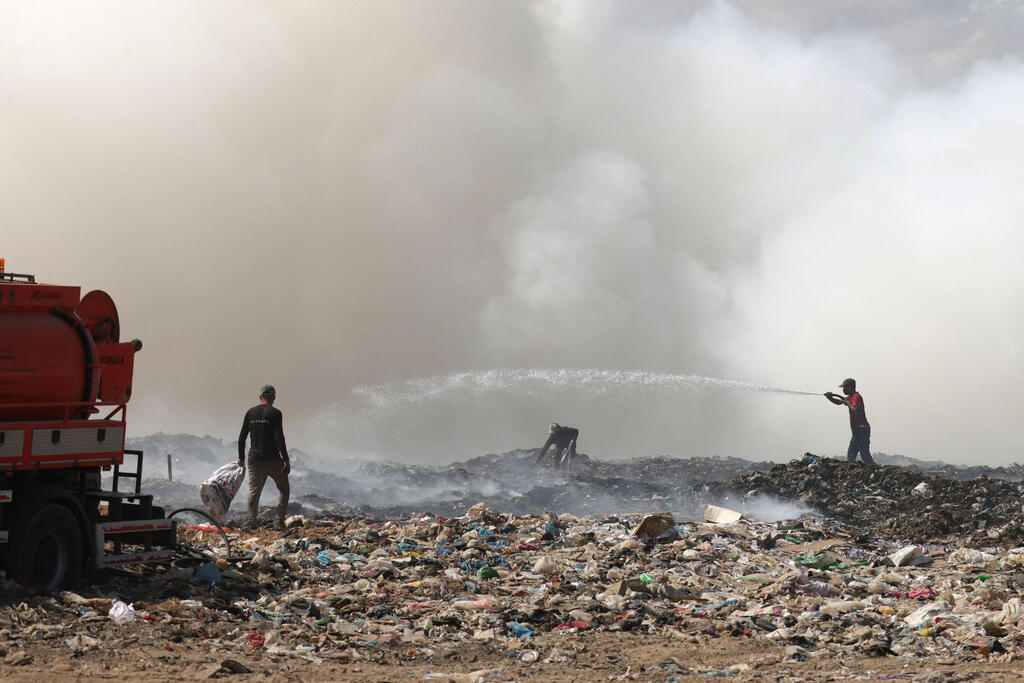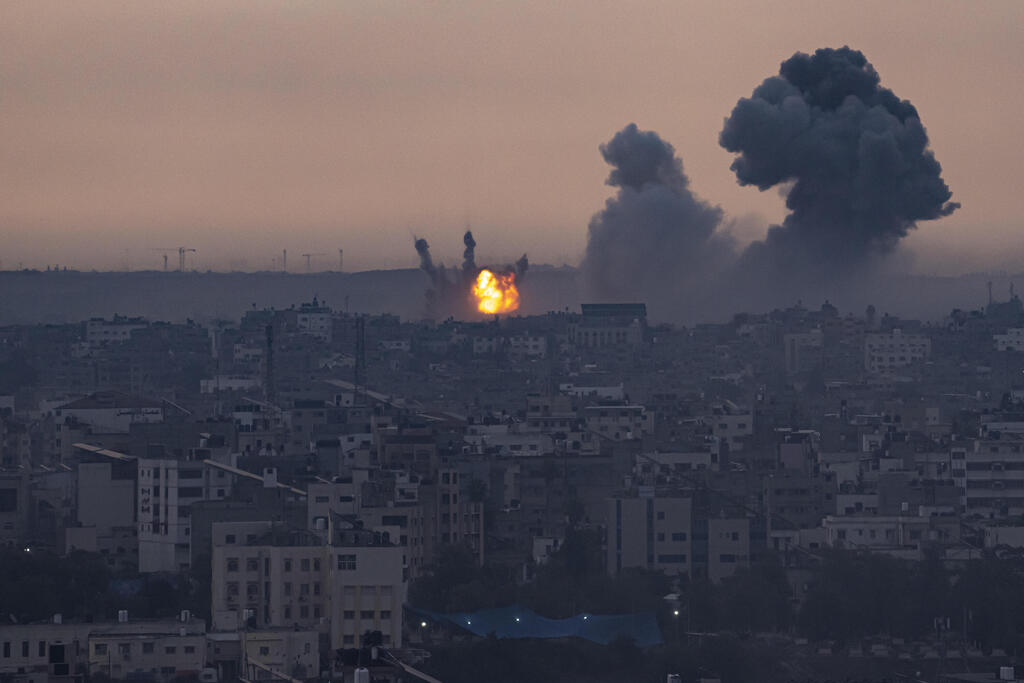Getting your Trinity Audio player ready...
The impact of the ongoing war is already evident just two days in. According to the United Nations Relief and Works Agency (UNRWA), there are already more than 20,000 displaced as of Monday noon as a result of the extensive airstrikes carried out by the Israeli Air Force on targets within the Gaza Strip. These displaced individuals have sought shelter in UNWRA schools in the area, and it is estimated that their numbers will only balloon further as the conflict continues.
Read more:
The full extent of the damage to buildings and infrastructure in Gaza during the first two days of the war remains unknown at this time. However, it is clear that, given Israel's strong response, the damage will only mount. The UN estimates that in the four previous rounds of conflict between 2009 and 2021, the cumulative damage inflicted on the Strip amounted to approximately $5 billion.
It is important to note that prior to the current war, the damages from the 2014 Operation Protective Edge and the 2021 Guardian of the Walls were not fully repaired. It appears the damage caused in the near future in Gaza will exceed that of previous rounds of violence.
According to various statements, Israel is expected to change the dynamics and bring about a significant shift in the economic relations between Israel and the heavily reliant economy of the Gaza Strip. Israel must consider that such a change is likely to result in a complete collapse of the Gaza economy.
Israel exercises control over the supply of electricity, fuel, goods and labor movement in the Strip, and without access to these resources, the economic functioning of Gaza will be severely hindered. While there is the possibility of receiving goods and fuel through Egypt, including through smuggling, it is unlikely to meet demand, and the motivations of Egypt to provide such lifelines to Hamas remain unclear.
Israel is a major power supplier
The pressure from Israel is evident in the Strip, where the electricity company in Gaza announced on Sunday afternoon that the residents are experiencing an 80% shortage in electricity supply. This shortage is due to the suspension of power supply from Israel, as all electricity lines to the Strip have been disconnected. Additionally, some of the main transformers that provide electricity to different areas in the Strip have been damaged by Israeli bombings.
It is important to note that the electricity network in the Gaza Strip heavily relies on Israeli power lines, which contribute more than 120 megawatts of power. There is also locally generated power at the local power station, which has a production capacity ranging from 65 to 120 megawatts, depending on the operational readiness of its four generators.
However, the operation of this station is also dependent on the supply of fuel from Israel, which is expected to be cut off in the near future. As a result of the shortage, the company in Gaza announced that the electricity production capacity has dropped to only 60 megawatts, leading to a limited electricity supply of only four hours on Sunday.
The Gaza economy relies significantly on the employment opportunities available in Israel. Prior to the war, approximately 18,000 Gazan workers, including traders, held valid work permits in Israel. These permits were considered valuable assets by Hamas, as they contributed to the preservation of resources they routinely use.
Gazans actively sought after these work permits, and Hamas encouraged this pursuit due to the benefits it derived from the funds entering from Israel. These funds played a crucial role in solidifying Hamas' control over the Gaza economy and supporting its military activities.
On average, Gazan workers in Israel earn around $1,640 per month, a substantial income in the context of Gaza. This amount is six times higher than the average salary of a local worker. Rough estimates suggest that employment in Israel generates a daily income of approximately $3 million for the Gaza Strip, making it a significant contributor to the local economy.
However, we should note that despite the employment opportunities in Israel, the chronic issue of unemployment in the Strip remains unresolved, with an unemployment rate of approximately 50%. Although this rate is still high, it is lower than the figure recorded at the end of 2020, when the unemployment rate reached around 80%.
A facade of growth and serenity
It appears that the challenges faced by the residents of Gaza were not a top priority for Hamas. Instead, the terrorist organization has been focused on building its military capabilities and implementing a detailed combat plan since the conclusion of Operation Protective Edge.
The ideological goals of Hamas, including the destruction of Israel, took precedence over economic considerations. Hamas successfully convinced Israel and other actors in the Arab world that it was willing to calm the situation in exchange for economic support and the rehabilitation of the Gaza Strip. However, this seems to have been part of a deceptive plan by the military wing of Hamas to make Israel doze off while they were meticulously constructing a destructive plan, the effect of which became painfully evident on Saturday morning.
The funds provided by Qatar, which have been the primary source of funding for Hamas, have been incorporated into Hamas' strategy to create the perception that everything is tied to financial resources. In August, the Hamas government in Gaza announced its inability to pay salaries to its employees, citing a lack of consistent monthly funds and a significant decrease in the amounts received, from $10 million per month to only $3 million.
4 View gallery


Palestinians collect food aid at a distribution center run by United Nations Relief and Works Agency (UNRWA), in Gaza City
(Photo: AFP)
The deterioration of relations between Qatar and Hamas can be attributed to Hamas aligning itself with the regime of Syrian President Bashar al-Assad after years of strained relations due to the Syrian civil war. Among the Arab entities, Qatar was the sole opponent of normalizing relations with the Assad regime, and therefore, thus not supportive of Hamas' alignment. Moreover, Hamas alleges that Qatar demanded a complete transfer of funds in exchange for calming the situation, especially during the Jewish holidays.
Looking back, it seems Hamas had sufficient funds available to enhance its military capabilities, while the well-being of the civilian population took a backseat in the organization's priorities.




